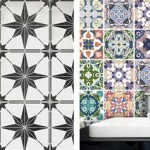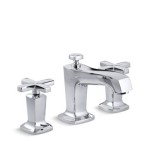Bathroom Mosaic Floor Tile Ideas
Mosaic floor tiles offer a versatile and aesthetically pleasing solution for bathroom design. Their intricate patterns, diverse materials, and customizable arrangements allow for the creation of unique and visually stunning spaces. The small size of mosaic tiles provides excellent slip resistance, making them a practical choice for wet environments like bathrooms. This article explores various mosaic tile ideas suitable for bathroom floors, focusing on design options, material considerations, and installation factors.
Exploring Mosaic Tile Design Options
The design possibilities with mosaic floor tiles are virtually limitless. From classic geometric patterns to intricate pictorial designs, mosaics can be tailored to reflect individual aesthetic preferences and complement the overall bathroom style. The size and shape of the individual tiles, the combination of colors used, and the layout pattern all contribute to the final visual impact.
Geometric patterns are a popular choice for bathroom floors, offering a timeless and sophisticated look. Simple grids, herringbone patterns, and more complex geometric designs like chevrons or basketweave can create a visually interesting surface without being overly busy. These patterns work well in both small and large bathrooms, providing a sense of order and structure.
For those seeking a more artistic and personalized touch, pictorial mosaic designs offer the opportunity to incorporate intricate images or abstract artwork into the bathroom floor. These designs can range from simple floral motifs to elaborate landscapes or portraits. Pictorial mosaics often involve a greater degree of customization and may require professional installation to ensure accurate execution.
Another design option involves creating borders or accents using mosaic tiles. A mosaic border can be used to frame the perimeter of the bathroom floor, highlighting its shape and adding a touch of elegance. Alternatively, mosaic tiles can be used to create accent strips or decorative elements, such as a mosaic rug effect in front of the vanity or shower area. This approach allows for incorporating mosaic elements without covering the entire floor, providing a subtle yet impactful visual enhancement.
Color plays a crucial role in mosaic tile design. Monochromatic schemes, using varying shades of a single color, can create a serene and sophisticated ambiance. Contrasting colors can be used to create bold and dynamic patterns, adding visual interest and energy to the bathroom. Consider the existing color palette of the bathroom, including the wall color, fixtures, and accessories, when selecting mosaic tile colors to ensure a cohesive and harmonious design.
The size of the mosaic tiles also influences the overall aesthetic. Smaller mosaic tiles, such as those measuring less than one inch square, tend to create a more intricate and detailed look. Larger mosaic tiles, on the other hand, can create a more modern and streamlined appearance. The choice of tile size depends on the desired style and the overall size of the bathroom. Smaller bathrooms may benefit from smaller tiles, which can create the illusion of more space, while larger bathrooms can accommodate larger tiles without feeling overwhelming.
Material Considerations for Bathroom Mosaic Tiles
Mosaic tiles are available in a wide range of materials, each offering unique properties and aesthetic characteristics. Common materials include glass, ceramic, porcelain, stone, and metal. The choice of material should be based on factors such as durability, water resistance, slip resistance, and aesthetic appeal.
Glass mosaic tiles are a popular choice for bathrooms due to their non-porous nature and resistance to water damage. They are available in a vast array of colors and finishes, including glossy, matte, and iridescent options. Glass tiles can add a touch of elegance and sophistication to the bathroom, reflecting light and creating a bright and airy atmosphere. However, glass tiles can be more expensive than other materials and may require professional installation due to their fragile nature.
Ceramic and porcelain mosaic tiles are durable and affordable options suitable for bathroom floors. Porcelain tiles are denser and less porous than ceramic tiles, making them more resistant to water absorption and staining. Both ceramic and porcelain tiles are available in a variety of colors, patterns, and finishes, allowing for a wide range of design possibilities. They are also relatively easy to maintain and clean, making them a practical choice for high-traffic areas like bathrooms.
Stone mosaic tiles, such as marble, granite, and slate, offer a natural and luxurious look for bathroom floors. Stone tiles are durable and resistant to wear and tear, but they can be more porous than other materials and may require sealing to prevent staining. The natural variations in color and texture of stone tiles add character and depth to the bathroom, creating a unique and organic aesthetic. Stone tiles can also be more expensive than other options and may require specialized installation techniques.
Metal mosaic tiles, such as stainless steel, copper, and brass, can add a modern and industrial touch to bathroom floors. Metal tiles are durable and water-resistant, but they can be susceptible to scratches and tarnishing. Metal tiles are often used as accent pieces or decorative elements, adding a touch of glamour and sophistication to the bathroom. They can also be more expensive than other materials and may require specialized cleaning products to maintain their shine.
The grout used with mosaic tiles also plays a crucial role in the overall look and performance of the floor. Epoxy grout is a popular choice for bathrooms due to its water resistance, stain resistance, and durability. Epoxy grout is also less susceptible to mold and mildew growth, making it a hygienic choice for wet environments. Cement-based grout is a more traditional option, but it requires sealing to prevent water absorption and staining. The color of the grout can also impact the overall aesthetic, either blending in with the tiles for a seamless look or contrasting with the tiles to highlight the pattern.
Installation Considerations for Mosaic Floor Tiles
Installing mosaic floor tiles requires careful planning and execution to ensure a professional and long-lasting result. Proper subfloor preparation, tile setting techniques, and grouting procedures are essential for a successful installation. It is often recommended to hire a professional tile installer, especially for complex designs or intricate patterns.
Subfloor preparation is a critical step in the installation process. The subfloor must be clean, level, and structurally sound to provide a stable base for the tiles. Any imperfections in the subfloor, such as cracks or unevenness, must be addressed before installing the tiles. Applying a self-leveling compound can help to create a smooth and even surface. A waterproof membrane may also be necessary to protect the subfloor from moisture damage, especially in shower areas.
The tile setting technique involves applying adhesive mortar to the subfloor and carefully positioning the mosaic tile sheets or individual tiles. A notched trowel is used to create ridges in the mortar, ensuring proper adhesion and coverage. It is important to maintain consistent spacing between the tiles to create uniform grout lines. Using tile spacers can help to achieve consistent spacing. For more complex patterns, it may be necessary to dry-lay the tiles before applying the mortar to ensure proper alignment and fit.
Grouting is the process of filling the spaces between the tiles with grout. The grout is applied using a grout float, pressing it into the grout lines and removing excess grout from the tile surface. It is important to clean the tile surface thoroughly after grouting to remove any residual grout haze. The grout should be allowed to cure properly before exposing the floor to water or heavy traffic. Sealing the grout can help to protect it from staining and water absorption.
Cutting mosaic tiles can be challenging, especially for intricate shapes or patterns. A wet saw with a diamond blade is often used to cut tiles accurately and prevent chipping. For smaller adjustments, tile nippers can be used to nibble away at the edges of the tiles. Safety precautions, such as wearing safety glasses and gloves, should be taken when cutting tiles.
Maintaining mosaic floor tiles involves regular cleaning and occasional sealing. Use a mild detergent and a soft cloth or mop to clean the tiles. Avoid using abrasive cleaners or scrub brushes, which can damage the tile surface. Sealing the tiles and grout can help to protect them from staining and water absorption. The frequency of sealing depends on the type of tile and the level of usage. Regular maintenance will help to keep the mosaic floor tiles looking their best for years to come.

Prepare To Be Amazed By These 13 Mosaic Bathroom Floor Tile Ideas

Mosaic Bathroom Tiles For Your Home Designcafe

Bathroom Mosaic Tiles Luxury Design Ideas Hyperion

Best Shower Floor Tiles Non Slip Ideas 2025 Updated Country Floors

Gray And White Mosaic Bathroom Floor Tiles Design Ideas

Mosaic Bathroom Tiles For Your Home Designcafe

Best Mosaic Tiles For Bathroom Kitchen Art Decoration Wall Floor Buyer S Guide Ramirro

Luxury Bathroom Mosaic Design Tiles Inspiration And Ideas From Maison Valentina

Prepare To Be Amazed By These 13 Mosaic Bathroom Floor Tile Ideas

Decorating Your Bathroom With Mosaics A Practical Guide Tile Mountain







